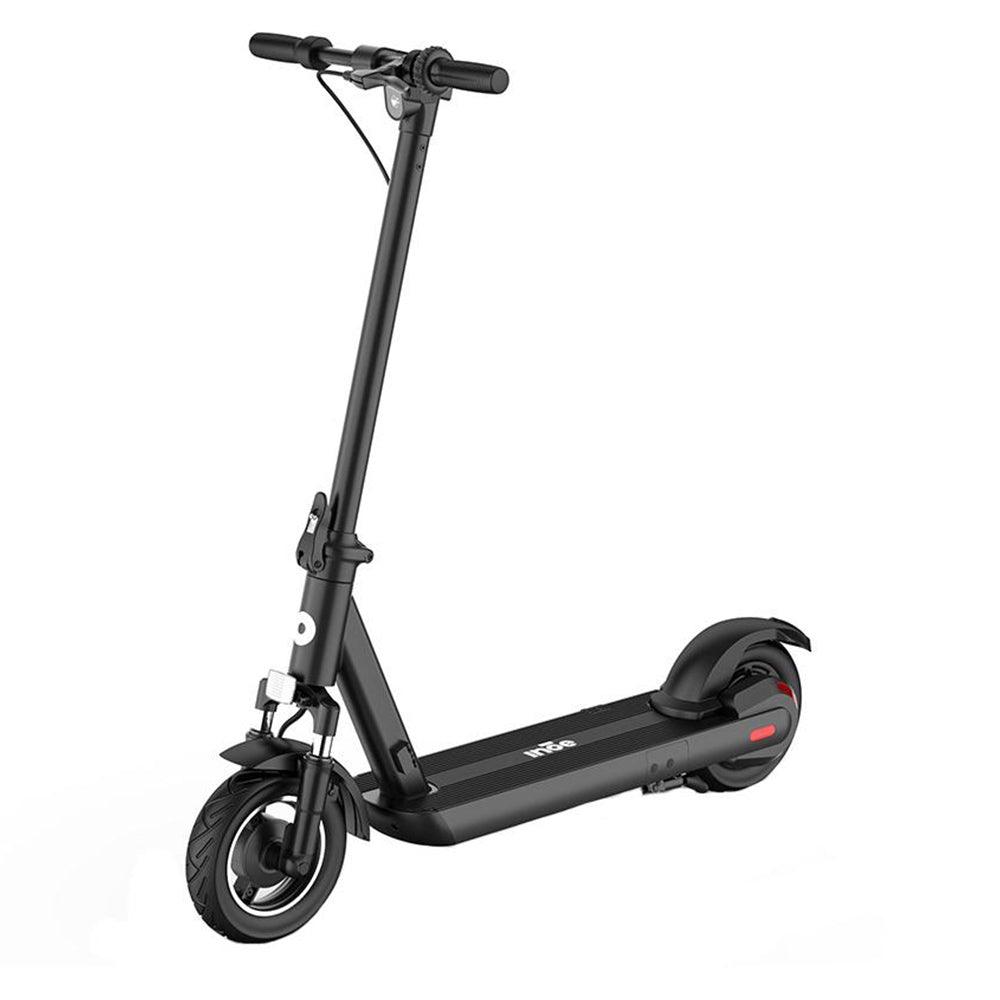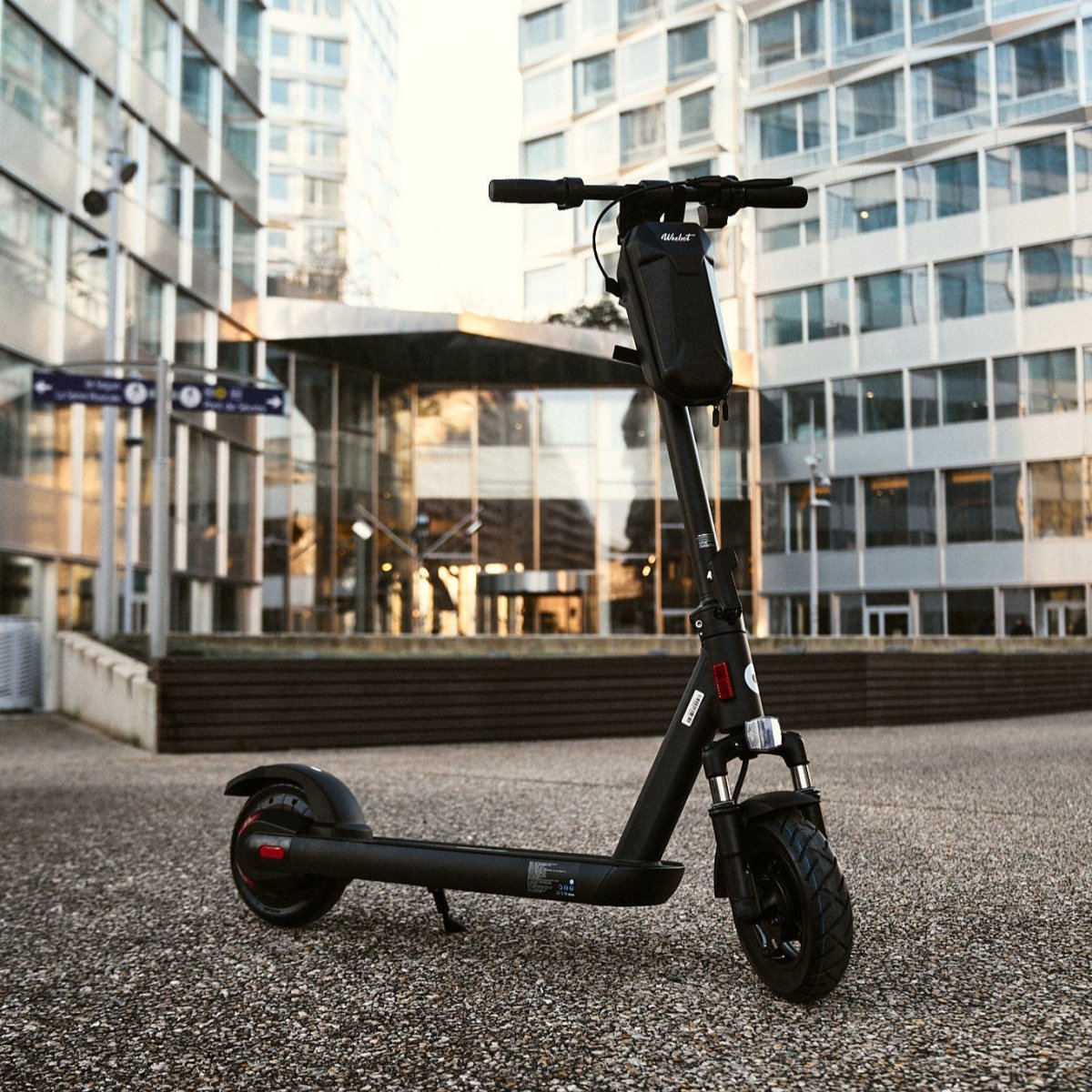With a good braking system, you have less risk of having an accident on your electric scooter. But faced with the diversity of choices available, "wheelers" often have difficulty finding THE right braking system. To help you in your choices, the Weebot team has made a list of the different types of braking on an electric scooter. But first, we explain the importance of this choice.
Why is the choice of braking so important?
A good braking system is above all a guarantee of your safety and comfort on the road. It reduces the risk of accidents and improves the maneuverability and stability of the electric scooter. We provide you with more explanations.

To ensure your safety
When you are riding in an urban environment, you need to be able to stop your vehicle quickly and safely. This is important because obstacles and unforeseen events are common in the city. With a good braking system, you can have peace of mind. You will feel safer on your electric scooter.
Similarly, on wet roads, effective braking allows you to maintain your grip and avoid skidding.
For better performance
On board a fast electric scooter or a 25km/h electric scooter, know that the type of braking plays a key role in maneuverability and riding comfort. Hydraulic disc brakes, for example, provide powerful and progressive braking. Ideal for stopping when you are going at high speed or downhill.
As for drum brakes, they are smoother and require little maintenance, which is well-suited for moderate urban use. In bad weather, your braking system must be able to maintain all its grip. In this exercise, disc brakes are the most effective.
The different types of braking on an electric scooter
Each braking system has its own specific features. Understanding their differences will allow you to improve your comfort on the road and ensure your safety, regardless of the obstacles that may arise on your path. And this is true even if it rains or snows.

The disc brake: powerful and effective
The disc brake is the most popular braking system among electric scooter manufacturers. And especially among brands that offer high-end electric scooters. Engineers love it for its efficiency and responsiveness, which ensure effective stops even at full speed.
Its operation is simple: pressure is applied to a metal disc fixed to the wheel, which slows down the movement of the electric scooter.
There are two main types of disc brakes:
- Those mechanical ones that use a cable to operate the brake pads. Simpler and more economical, but requires regular maintenance to ensure their durability.
- Those hydraulic ones that operate thanks to a brake fluid. More precise and efficient, it nevertheless requires a good dose of maintenance.
Bonus: their effectiveness does not decrease, even in the rain, making them an ideal choice for year-round use.
The drum brake: reliable and durable
The drum brake is also popular on certain models of electric scooters. The reason: excellent robustness and low maintenance. Its solid internal mechanism allows it to function effectively even when weather conditions are unfavorable.
Its closed design even protects it from dust and moisture.
It works thanks to a metal drum located in the hub of the wheel. When you pull the brake lever, an internal mechanism pushes "jaws" against the wall of the drum, creating friction that slows down the vehicle.
The electromagnetic brake: a modern technology
The electromagnetic brake is the modern solution for your electric scooter. Operating thanks to a magnetic field, it is often coupled with other mechanical brakes to optimize braking efficiency. Moreover, it allows, on certain models, to recover a portion of the energy generated during braking to boost battery autonomy.

The electromagnetic brake has a sensor that activates an electromagnetic field as soon as the brake lever is engaged. The motor then enters resistance, which reduces the speed of the scooter without any physical contact between parts. This technology has been designed to reduce wear on mechanical components and ensure smooth and progressive braking.
However, it shows its limits during emergency stops or on steep descents, as it does not provide the necessary braking power on its own. That is why it is often coupled with a mechanical brake.
The foot and friction brake: supplementary solutions
These two braking systems are mainly available on entry-level models. Simple and inexpensive, they remain effective despite quite logical limitations.
First of all, the foot brake is the most basic braking device. It is often used in conjunction with another braking system. Installed on the rear fender, it works by applying pressure with the foot to slow down the wheel. Its simplicity is remarkably effective, but it proves ineffective when the scooter is launched at full speed.

As for the friction brake, it relies on a pad that rubs directly against the wheel to slow down the machine. It is easy to maintain and is generally found on entry-level models. However, this does not mean that it is not effective. It provides responsive braking, although it is not highly recommended for high speeds.
The advantages of regenerative braking
Regenerative braking is one of the major advantages of modern electric scooters like the Kaabo Wolf Warrior GT Pro Plus and the Anoki S. Every time you brake, the motor turns into a generator and recovers energy, much like engine braking in a car. This energy is then sent back to the battery, thus extending your range!

A smoother and more pleasant braking
One of the great advantages of regenerative braking is that it allows for smooth braking. Unlike traditional braking systems, it does not cause sudden jolts, making driving more comfortable, especially during gradual stops or downhill driving. The braking is more natural and less aggressive for the user, allowing for better speed management, especially over long distances.
Extended autonomy
The practical aspect of regenerative braking is that it allows you to recover a portion of the energy you have expended. This recovered energy is used to recharge the battery, which can enable you to travel additional miles without having to plug your scooter into an outlet. This becomes particularly useful for long trips or during frequent urban commutes, where stops and braking are more numerous.
Local laws and recommendations regarding braking
In 2025, specific requirements will regulate the safety of scooters, and they even vary by city! Discover what the French and European regulations impose regarding braking for a smooth ride.

Regulation in France
In 2025, electric scooters in France must be equipped with two independent braking systems. This requirement aims to ensure that if one brake fails, the other is sufficient to stop the scooter safely. Models with disc or regenerative brakes often meet this standard, but it is essential to check before purchasing.
European standards
The EN 17128 standard, in effect since 2022, regulates the safety of scooters in Europe, including braking systems. It imposes strict criteria to ensure effective and safe braking, regardless of the environment or weather conditions.
Specific local regulations
Some cities, like Paris, impose strict rules for electric scooters. In Paris, for example, the speed is limited to 20 km/h and scooters must have an effective braking system and two braking wheels for the safety of users.
Legislation in 2025 and beyond
Safety regulations continue to evolve in 2025 to incorporate new braking technologies and encourage safer practices. It is important to stay informed of the latest updates to remain compliant and ensure safe driving.
The maintenance of the different braking systems
A good maintenance of your braking system is the guarantee of optimal safety and a long lifespan for your scooter. But each type of brake requires specific maintenance. Let's take a closer look at all of this.

Mechanical disc brakes: simple but regular maintenance
Mechanical disc brakes are relatively easy to maintain. Their main maintenance involves checking the wear of the pads and adjusting the brake cable. On average, it is recommended to check the condition of the pads every 500 to 1000 km, depending on your usage.
Cables should be lubricated from time to time to prevent rust and ensure smooth braking. If necessary, you can easily replace the cables or the pads. The advantage here is that you don't have to worry about complex systems, and maintenance remains economical.
Hydraulic disc brakes: more precise, but more demanding
Hydraulic disc brakes, on the other hand, are more efficient and require more meticulous maintenance. Their system, based on hydraulic fluid, may require purging (bleeding the brake fluid) every 1000 to 1500 km, depending on your usage. This operation is essential to maintain a constant braking pressure and avoid leaks.
The brake pads should also be checked regularly, as they wear out faster with the braking power. If you often drive in the rain or in muddy conditions, maintenance will need to be more frequent. It is also advisable to regularly check the fluid level and inspect the system for leaks.
Drum brakes: low maintenance, but beware of wear.
Drum brakes require very little maintenance. Their enclosed mechanism protects them well from moisture and dust, making them more durable. However, it is still necessary to check the wear of the brake shoes every 1000 to 2000 km. Their durability is excellent, but a periodic check is important to avoid less effective braking. Once worn, the brake shoes are easy to replace and inexpensive.
Electromagnetic brakes: little maintenance, but some checks
The electromagnetic brake is virtually maintenance-free, as there are no mechanical parts that wear out quickly. However, it is necessary to check that the sensor is functioning properly and that there are no failures in the electrical circuit. A light cleaning to remove dust from time to time will suffice. In case of a problem, it is advisable to consult a professional, as this requires a more technical diagnosis.
You will have understood that each braking system has its maintenance needs, and the more you maintain it regularly, the longer its lifespan will be. Checking the pads, cables, and brake fluid, depending on the type of brake, will allow you to enjoy your journeys safely!
Conclusion
Braking is a key element for riding safely and having a pleasant driving experience. Depending on your needs, each braking system for electric scooters offers different advantages. In addition to the specific features of each type of brake, it is also important to consider the applicable regulations. Finally, do not forget that maintaining your braking system is another point not to be overlooked. Each type of brake, whether mechanical, hydraulic, drum, or electromagnetic, requires special care to extend its lifespan and ensure optimal performance.
Weebot offers you a selection of electric scooters with high-performance braking systems for a no-compromise experience. Explore our models and set off on your adventure safely!



